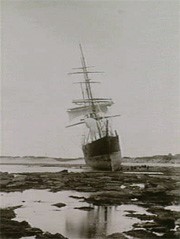South Gippsland

Cape Liptrap
5-15M
The western side of Cape Liptrap can be shore dived in easterly weather from a rough track that leads off Cape Liptrap Road, about 750m north of the lighthouse. There is a lot of weedy reef all around the shoreline. The eastern side can technically be shore dived, but the risk of injury justifies the expense of a boat charter. There are seals hauling out around the point and long stretches of reef heading well out to sea. The fish life is very abundant. Like all of the exposed Bass Strait dives, learning how to pick the right day is an important skill.
Maitland Beach
3-9M
This area is reached by boat or along a very rough 2wd track. Entry is from the beach and leads over a wide area of shallow sea terrace. This deepens about 100-200 metres from shore. There are also extensive reefs to the south of the beach with excellent fish life. The area is exposed to south easterly swell.
Bird Rock
5-10M
This site close to Walkerville South Beach is on isolated rocks off the end of the headland. The headland is an interesting feature in itself and is cut through by large, dry, caves. The best diving is in 8M off the end of Bird Rock. The northern side is relatively sheltered and this is a nice easy dive on weedy reef. The visibility can be poor at times.
Eagles Nest
3-8m
This prominent coastal feature near Inverloch consists of a unique pillar of rock isolated on a large sea terrace. The diving ids done anywhere off the edge of the terrace. Close to the platform there are some interesting bommies. Fish tend to be small but have been increasing in abundance and size since becoming part of the Bunurong Marine Park. Long parallel reefs run some distance out from the shore for the more adventurous. The area is very exposed to south easterly swells and is a stiff walk from the car park.
Shack Bay
3-5m
This area offers an extensive area of rocky headlands, rock platforms and sunken ledges. The area is very exposed to south easterly swells.
Twin Reefs
3-12m
This sandstone feature consists of two parallel reef platforms separated by a shallow 3M gully. The outer reef shelters the entry point allowing easy access to the nearby rocky reef along the foreshore, or out to sea for the more experienced and adventurous. If you have the fitness for a long swim, or a boat, the ledges to the west of the Twins have excellent fish life. The area is very exposed to southerly swells.
Cape Patterson
3-10m
This cape offers some extensive rocky platforms and small bommies, particularly on the more exposed seaward side. The fish life is good. It can only be dived on very calm days. The closest road access is from the surf club, quite a long walk in full gear.
Harmers Haven
3-5m
There are a few low reefs and rock platforms on the headland to either side of the beach. The fish life is good and it can be an easy snorkel dive in very low swells.
Wreck of the “Artisan”, Wreck Beach
3-10M

The three masted wooden barque Artisan was built in 1881 in Canada. The vessel was 189.6 ft (57.8 m) long, and 1155 ton (gross).
The Artisan left Manila in 1901 in ballast bound for Newcastle to take on coal an. Close to the Victorian coast a storm struck and the captain was lost. Off Cape Patterson the wind suddenly changed direction. Fresh sails were hoisted but these too were torn to pieces and at last the vessel was swept towards shore. She went ashore on Wreck Beach with waves breaking over her deck. The Artisan was forced far over the reef and was stranded in 3 feet of water. She was heavily salvaged before breaking up.
Now items are strewn across the reef and are visible at low tide. In the water there are low sandstone gullies filled with small items from the wreck only 50 metres from the shore. A hundred metres offshore it changes again into a vast area of gullies, ledges and overhangs in 5-8 metres. The scattered rock formations are still found 500 metres from the shore. Visibility drops significantly after rain thanks to the nearby creek. This area is exposed to southerlies and can have nasty rips.
Black Head and Kilcunda Bay
3-10m
There are extensive reefs around Black head, along about 2kms of coast west from Kilcunda. The bays are filled with ledges and bommies and excellent fish life. The area is rarely dived due to the exposed nature of the area and the risk of being caught by a change in weather. The area can also be current prone and is for experienced surf divers.
